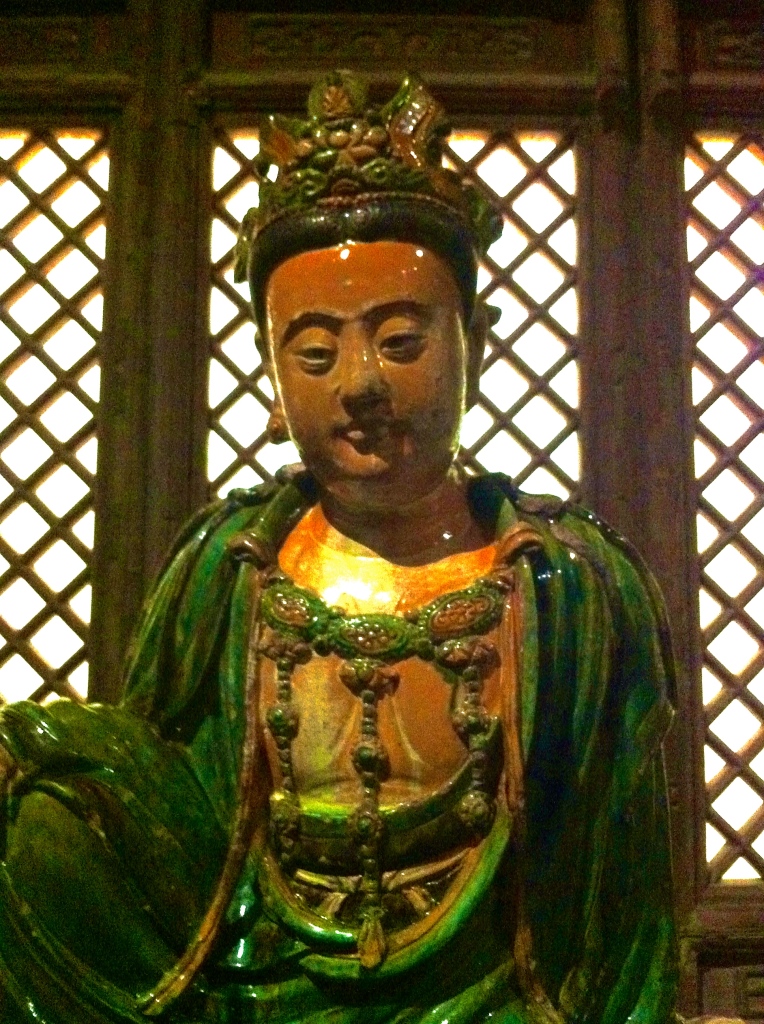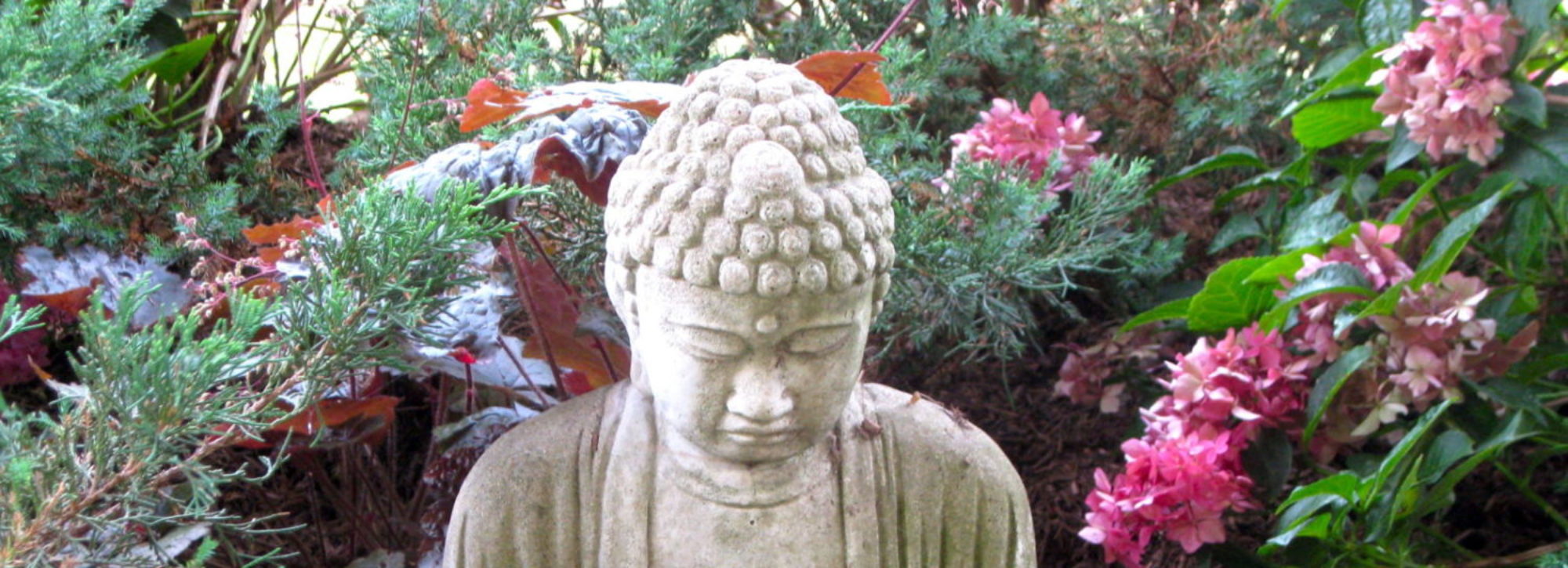 At a dinner party the other night the perennial question — ”is Buddhism a religion?” — arose once again. I’m not sure why this question keeps getting asked here in the West— it probably never gets asked in Asia. It’s only an interesting question if you have a dog in the fight — if you believe that religion’s either a good thing or a bad thing and need to decide which basket to toss Buddhism into so you can know whether you approve of it or not. Buddhist scholar Damien Keown devoted the entire first chapter of his Buddhism: A Very Short Introduction to the question, thereby making his very short introduction longer than it might otherwise have been. He enumerated various attributes of religions (ritual, myth, doctrine, ethics, clergy, temples, statues, pilgrimage sites, etc.) and explained why Buddhism ought to be considered one. In doing so, he compared Buddhism to the elephant in the hoary story of the blind men and the elephant — how it appears to be different things when seen from different vantage points. Gesshin Greenwood — a Californian-born Sotō Zen Buddhist nun residing in Japan — employed a different sort of animal metaphor when she addressed the question more succinctly:
At a dinner party the other night the perennial question — ”is Buddhism a religion?” — arose once again. I’m not sure why this question keeps getting asked here in the West— it probably never gets asked in Asia. It’s only an interesting question if you have a dog in the fight — if you believe that religion’s either a good thing or a bad thing and need to decide which basket to toss Buddhism into so you can know whether you approve of it or not. Buddhist scholar Damien Keown devoted the entire first chapter of his Buddhism: A Very Short Introduction to the question, thereby making his very short introduction longer than it might otherwise have been. He enumerated various attributes of religions (ritual, myth, doctrine, ethics, clergy, temples, statues, pilgrimage sites, etc.) and explained why Buddhism ought to be considered one. In doing so, he compared Buddhism to the elephant in the hoary story of the blind men and the elephant — how it appears to be different things when seen from different vantage points. Gesshin Greenwood — a Californian-born Sotō Zen Buddhist nun residing in Japan — employed a different sort of animal metaphor when she addressed the question more succinctly:
I’m not an anthropologist and I don’t really know how to define religion, but you know how they say, ”If it walks like a duck, and swims like a duck, and quacks like a duck, it’s probably a duck?” ….For me, Zen Buddhism is definitely 100% a duck.
The question seems to comes up more often since I began preparing for novice clerical ordination (shukke tokudo) later this year. A religion without deity worship perplexes Westerners, so in the past I’ve sometimes resorted to categorizing Buddhism as ”a way of life” or ”a path” when trying to explain it to non-Buddhists. Once I decided to become a priest, however, that kind of evasion seemed less credible and illuminating.
So what does Buddhism-as-religion mean to me? Is it an elephant or a duck? To my mind, religions are — first and foremost — commitments to matters of ultimate concern. Being a Buddhist means making a deep and abiding commitment to wholehearted presence with things as they are; to summoning up all one’s wisdom and compassion — however meager they may be — and bringing them to bear on each and every moment, moment by moment. By wisdom, I mean a radical acceptance of the universe-as-it-is and non-clinging to all its manifestations; I also mean a deep and profound understanding of the radical interdependence of Being. By compassion, I mean an existential commitment to avoiding harm and reducing suffering, taking an active responsibility in the care of beings-and-things within our purview.
Many of the attributes Keown enumerates — ritual, myth, clergy, temples, statues, and pilgrimage sites — are nonessential attributes. I’m not dismissing them entirely, only assigning them their due place. They help enable the survival of the tradition over the course of centuries, much like the outer protein coat of a virus helps protect its inner DNA. They’re helpful to the extent that they facilitate awakening in moment-to-moment living. They’re unhelpful to the extent that they become objects of clinging and fixation, making us rigid and constraining our heartful, aware response to the exigencies of life. They’re tools that Buddhism-as-religion makes use of — upaya or skillful means — but not its core — its beating heart.
So what does it mean to be a Buddhist priest, especially for an existentially-oriented Buddhist who’s allergic to dogma and the supernatural?
The short answer — I don’t know.
The longer answer — I think it means being a handmaiden to awakening in whatever forms one’s own limited gifts allow. Finding out — exploring the possibilities that ripen as a consequence — is a path that’s been calling to me for a lifetime, from my preadolescent rabbinical fantasies, to my middle-aged fantasies of becoming a Theravada monk — never a possibility for married men and householders. Fortunately, history has been kind. The 1868 Meiji Restoration permitted the Japanese Buddhist clergy to marry, allowing me, one-and-a-half centuries later, to investigate that particular path.
I had a conversation a little over a year ago with Ted Meissner of the Secular Buddhist Association about why, although I’m sympathetic to their project, I don’t consider myself a secular Buddhist. I talked with him about the centrality of my experience of the sacred — of seeing all manifestations of the natural world as possessing a numinous quality of sacredness, and of the ultimate respect for beings and things that flows naturally from that experience. That particular variety of religious experience has been an integral part of my path. It’s what Buddhism means when it refers to the suchness of things — at least I think that term and my own inner experience share some congruence. The secular world has no reference point for this. Non-religious scientists talk about their experience of awe and wonder at the universe, but I’m not sure it’s the same thing. I think there are dimensions of human experience that science can’t — at least not yet, at least not as it’s currently constituted — include in its account of the way things are. The secular world can assign rights and ethical obligations to beings and things, but never holiness.
I suppose the other reason I’ve resisted being a secular Buddhist is that I’m an agnostic about many of the non-empirical questions Buddhist doctrine addresses. I’m skeptical of them, tending towards disbelief, but at the same time open to the possibility that I might be wrong. I see a commitment to secularism and naturalism as closing off possibilities I prefer remain open. So I leave the door ajar a little. You know the saying — keep an open mind, but not so open that your brain falls out.
I know that for many, Buddhism-as-religion means something else — something that gives clergy and temples and statues greater centrality — something that includes merit and prayer, rebirth and pure lands, hopes for protection and good fortune. But the key question isn’t whether Buddhism is a religion, but what sort of religion it is. And the answer is it means different things to different practitioners. I suspect that’s true for every religion — it can be fundamentalist, obscurantist, and dogma-ridden, or it can be an open invitation to explore the sacred, its outer trappings protecting, and at times hiding, a vital inner core.
So, is Buddhism an elephant or a duck?
I personally cast my vote for an amphibious, feathered pachyderm.

It’s probably a good thing you went with the pachyderm, because had you chosen the duck, being an existential Buddhist, you would have had to ask yourself, Why a duck?
Seriously, if you haven’t read this already you may find it interesting Buddhism is a Religion: a guest post by Dr. David Brazier. I agree with his point of view and disagree, just as I am, like you, sympathetic to secular Buddhism, but I am also unsympathetic.
Personally, I think the best answer is that it’s a path, a Way, a marga,a tao, a do — it’s something we don’t really have a category for the West, and there is no pressing need to categorize it.
David, as per your comment of “Why a duck?” — you know I’m averse to Marxist interpretations, even when the Marx in question is Groucho! It is interesting to see how Christians deal with a similar dilemma. Their official emblem may be the fish, but how quickly they reach for aquatic avian metaphor — “Lord love a duck!”
In other respects, I agree with all you say.
Seth – Thanks for another thoughtful essay. I’m curious to know more about your novice clerical ordination and what kinds of training it will entail. In the Rinzai tradition, the road to full ordination is long and arduous, and from a physical standpoint it is problematic for folks of a certain age
“Lay ordination” may be a contradiction in terms, but there is the example of Vimalakirti and other lay practitioners, who have made profound contributions to the practice tradition. I admire your commitment, but for my own part, I have found lay practice, concurrent with the taking of the jukai precepts, to be a viable middle ground between secular mindfulness, stress-reduction, and the like, on the one hand, and the path to priesthood, on the other.
Every good wish for your undertaking.
Thanks, Ben! I’m studying with the same priest/sensei who was my preceptor for jukai, so we’ve been working together for three years now. We meet regularly twice a month and review various matters of etiquette, protocol, and ritual, engage in koan study, discuss my understanding of sutras, etc. I only know what the process for novice ordination is. Whether I progress beyond that or not — who knows? Time will tell. It’s not the destination, it’s the process.